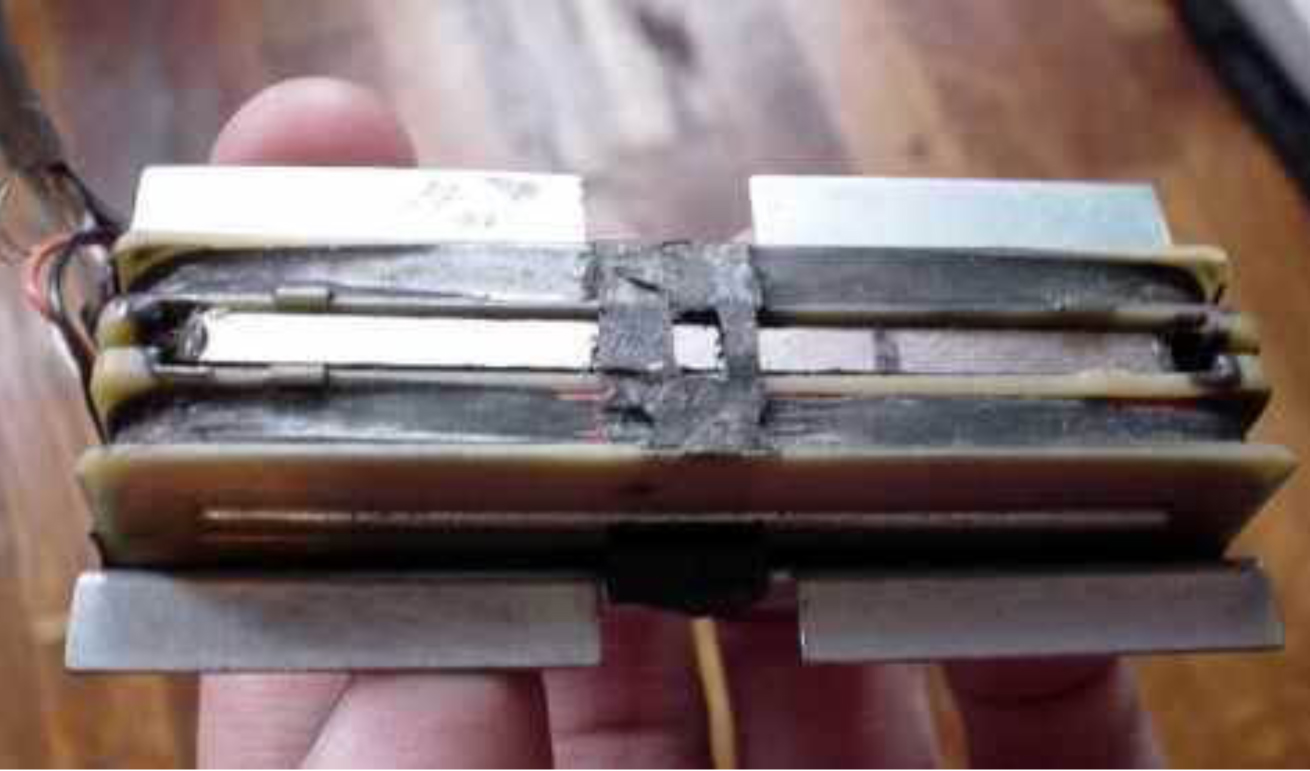Got a customer wanting a replica of one of these or as close as I can get. Have put one together and am testing it sans cover to avoid having to remove it with various changes, and it sounds really weak.
The design is a sidewinder with a steel bar in each bobbin, sitting sideways with a ceramic bar in between. It's wound to 6.0k and I've got a Ceramic 5 bar in there -- dimensions 2.4" x .187" x .245" -- and it sounds like it's a foot away from the strings. The design seems to have a fatal flaw in it that makes this not surprising because the steel bars and the magnet itself are all a bit away from the top, thus away from the strings, more so than almost any pickup. Yet I suspect the real deal wasn't this weak.
Another interesting thing I've read about it online is that "the bobbins are turned 90 degrees, as is the magnet". The magnet can't also be turned 90 degrees or you don't have N on one bobbin and S on the other. (I tried turning the mag 90 degrees and it was even weaker with an out-of-phase-ish tone to it.)
What am I doing wrong here -- does it need to be Ceramic 8 or something?
The design is a sidewinder with a steel bar in each bobbin, sitting sideways with a ceramic bar in between. It's wound to 6.0k and I've got a Ceramic 5 bar in there -- dimensions 2.4" x .187" x .245" -- and it sounds like it's a foot away from the strings. The design seems to have a fatal flaw in it that makes this not surprising because the steel bars and the magnet itself are all a bit away from the top, thus away from the strings, more so than almost any pickup. Yet I suspect the real deal wasn't this weak.
Another interesting thing I've read about it online is that "the bobbins are turned 90 degrees, as is the magnet". The magnet can't also be turned 90 degrees or you don't have N on one bobbin and S on the other. (I tried turning the mag 90 degrees and it was even weaker with an out-of-phase-ish tone to it.)
What am I doing wrong here -- does it need to be Ceramic 8 or something?

Comment